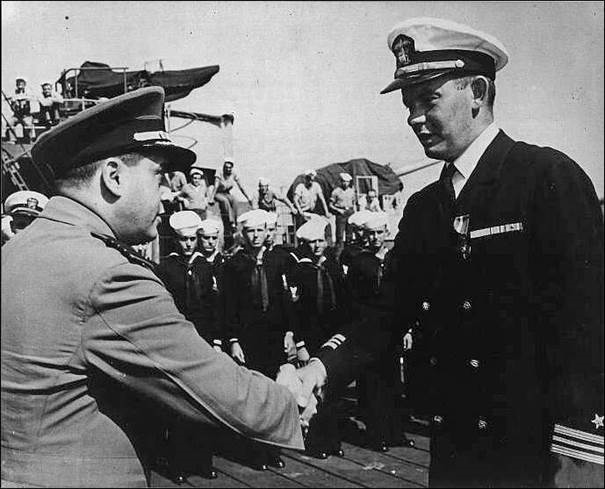How U-66 was sunk. Her story could have made “U-Boot 2”
She sank 33 ships and damaged 4 ships, was commanded by two Knight’s Cross recipients, Zapp and Markworth, and on the last voyage, under the command of 26-year-old Gerhard Seehausen, four ships sank and an epic battle with American aircraft and an escort destroyer took place.
But even before her death, she repeatedly lost people – in battles and without the influence of the enemy, and also brought misfortune to her “cash cows” – supply boats.
In the picture of U-66 in Lorian:
The shortest was the seventh patrol under the command of Frederick Markworth. By the way, here he is on the bridge in a white commander’s cap, although the number of the patrol to which the boat is going is not indicated:
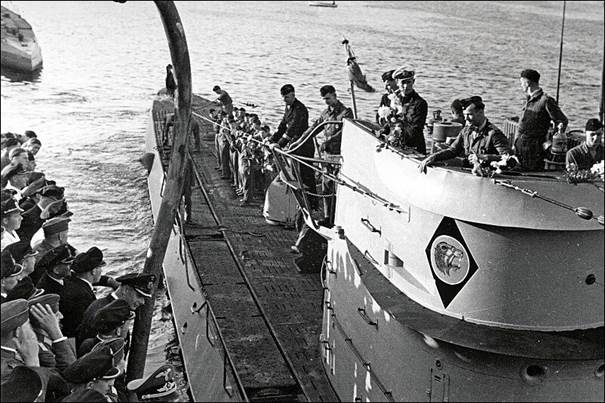
On 9 November 1942, the submarine left Lorian, and at 20:50 the radar indicator showed that the submarine had been spotted by enemy radar. In the process of diving, seawater began to enter through one ventilation valve. The switchboard caught fire, the flooded battery began to emit chlorine. We had to surface, and they were already waiting for the boat at the top.
A British Wellington Mk.VIII (RAF 172/D squadron, pilot F/O de Dixon) dropped four 100 kg bombs and fired at U-66 from a turret. The boat was thrown a meter out of the water, one electric propulsion motor, air compressor and rudder failed. The plane did not attack again, but the further campaign had to be abandoned. On November 11, the boat reappeared in Lorian.
Repairs lasted until 6 January 1943, when the submarine left the base. In addition to hunting for enemy ships, she had to perform another task – to land a German agent Jean Lallart in Mauritania. He was to be brought ashore on an inflatable boat by Bootsmaat Wagner and Matrosenobergefreiter Daschke. Immediately after the landing, they were captured by the French. Markworth waited 13 hours for his men, but was forced to leave without them. For each of them, he sank a ship on this campaign.
The next patrol, the ninth patrol, ended with Markworth badly wounded, and several others were killed and wounded. After sinking two tankers off the east coast of the United States and damaging a third, the submarine needed to replenish fuel and food supplies. She was scheduled to meet with the “cash cow” U-117. On 3 August, U-66 was approaching the designated square when she was attacked by the torpedo bomber USS Avenger and the fighter Wildcat from the escort carrier USS Card.
The officer of the watch announced, “Alarm!” but Marchworth, knowing that the submarine was most vulnerable at the moment of submerging, decided to accept the battle on the surface. If he had known that the torpedo bomber’s electric bomb droppers had failed at that moment, he would certainly have dived, but it turned out the way it did. On the first approach, the planes limited themselves to firing machine guns. The Germans responded with their own fire.
Immediately the second officer of the watch, Oberleutnant zur see K. Schütze, was killed and torpedo operator Heinz Nitsch, who was smoking on the bridge during the first attack, was seriously wounded. He was lowered inside the boat, where he soon bled to death. On the third run, the Avenger finally dropped two bombs and a Fido homing torpedo. But this was a mistake of the Americans, “Fido” operated at depths of 12 meters and more, and the boat did not dive.
On the 5th approach, Matrosenobergefreiter Lorenz fell, who was firing at the planes despite several wounds. By this point, Markworth had suffered back injuries, and on the sixth approach of the planes, a bullet hit him in the stomach. Trainee Fenrich zur See Faff suffered a penetrating wound to the chest. The first officer of the watch, Oberleutnant zur See Klaus-Joachim Herbig, and five other submariners had injuries of varying severity.
Realizing that there was nothing else for the planes to bomb, Herbig gave the command to dive. The murdered Schütze and Lorenz remained upstairs and there was no time to pick them up.
There were 16 tons of diesel fuel left on the boat and only one capable officer of the watch.
U-117 was ordered to rush to the damaged boat. On the night of 6 August, U-117’s doctor and first watch officer, Oberleutnant zur See Paul Frersks, took over to replace the barely alive Markworth. Also, in the dark, they managed to reload food, the matter was fuel.
And everything would have worked out, but the Allies had already read the German negotiations and were aware of the proposed meeting place. At 09:00 on 7 August, U-66 and U-117 surfaced and began the process of transferring fuel. Three hours later, they spotted an approaching plane.
On the first run, a bomb was dropped between the boats, the fuel hose was broken. U-66 left:
U-66 went to dive, and her wet nurse was apparently damaged and remained on the surface. Soon, four more planes flew in from the Card and together finished her off.
The award found heroes: Lieutenant Asbury H. Sullenger with the Navy Cross and Silver Star and Gunner James H. Hogan, who was awarded two air medals:
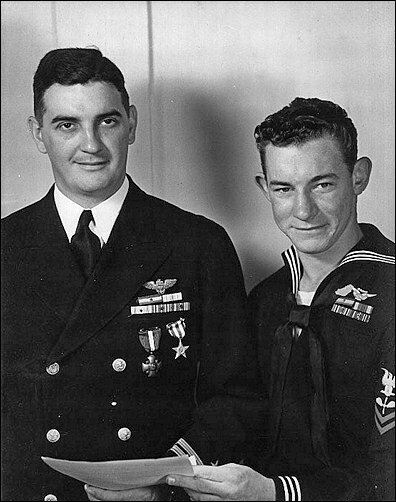
On 8 August, Frörks reported the attack to headquarters and added that the submarine needed another 35 tons of fuel.
Late in the evening of 16 August, U-66 took fuel from U-847 Herbert Kuppisch, and the submarines parted ways. On 1 September 1943, U-66 arrived at Lorian. Arriving at base, Frerks handed over the boat to another officer. As Markworth was unable to perform his former duties due to his wound, Oberleutnant zur See Gerhard Seehausen was appointed commander of the submarine.
A few words about the mentioned officers. Markworth did not go on combat campaigns again, served in a training unit, and died in 1994. Frex’s fate was more tortuous. At sea, he was a serviceable and capable officer. But on the shore he liked to pawn his tie and have fun. For his competent actions on U-66, he was stripped of his old sins and after the commanders’ courses he was appointed to command the brand new U-975.
However, he went on a rampage, behaved disgracefully under the fly, and more than once threatened those present with weapons in this state. On March 16, 1944, he was removed from his post and court-martialed. He issued a verdict: three months in prison followed by demotion to sailors. He survived the war, but in 1963 he allegedly went missing in Denmark.
More on Herbig below.
Gerhard Seehausen led U-66 on her last patrol on 16 January 1944. The patrol lasted 112 days, during which time 4 transports were sunk.
On the night of April 25-26, 1944, the submarine was supposed to refuel from another “cash cow” U-488, but it was sunk that night before the appointed meeting.
On the night of May 6, U-66 was spotted by radar from the escort carrier USS BLOCK ISLAND in the area of the Cape Verde Islands, where she was apparently expecting a rendezvous with another tanker.
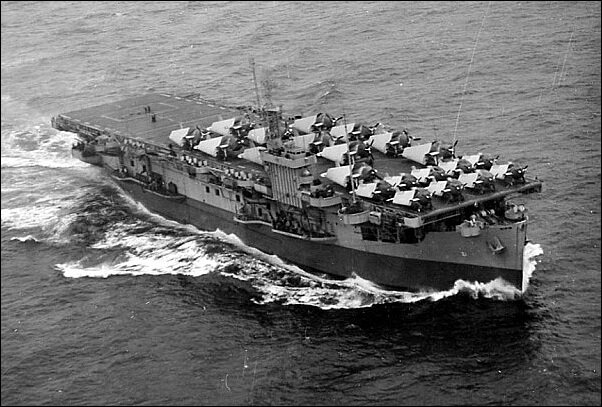
The plane began to be guided to the boat by the escort destroyer USS Buckley. As it approached, the Germans fired flares, but the ship did not respond, continuing to approach at 23 knots
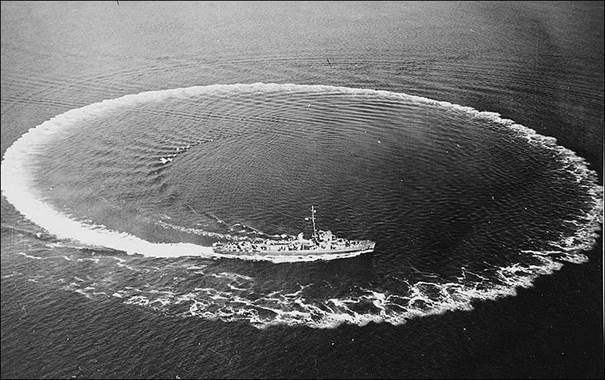
In less than 10 minutes, both ships were at a distance of 2,700 meters.
U-66, realizing that the ship heading for her was not a supply boat, fired a torpedo. The destroyer was able to evade, in general, it was a very maneuverable ship, the diameter of the circulation was no more than 300 meters at a speed of about 20 knots. It is he who writes out after the repair:
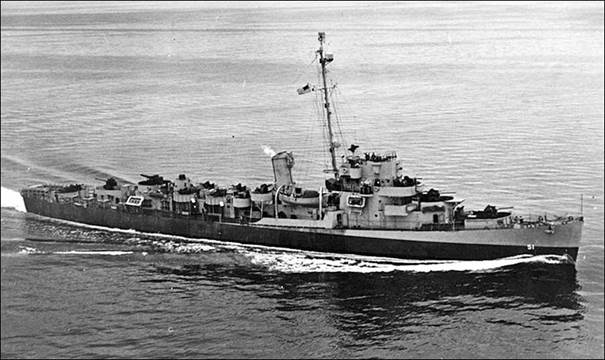
Buckley opened fire from 2,100 meters. The very first salvo from the 3-inch guns made a direct hit on the submarine’s forecastle directly in front of the deck gun. Rapid fire was carried out from all guns, including 20 mm, 40 mm and 3 inches. The Germans returned fire from their side, suffering losses, began to maneuver sharply and fired a second torpedo, but also to no avail.
Soon the opponents were at a distance of 20 meters from each other, moving on a parallel course, the submarine was shot from bow to stern. The 20 mm and 40 mm shells could be seen exploding and scattering around the conning tower, and the submarine’s fire had ceased, except for intermittent short bursts. As a result of intense artillery fire, a fire broke out on the submarine’s bridge, which burned with increasing intensity.
After that, the destroyer rammed, climbing onto the bow of the boat. The Germans poured onto the deck and climbed onto the forecastle of the destroyer, some with weapons to board. The Germans were shot with pistols and rifles, shell casings were used, one German had his head broken, even coffee mugs were thrown at them. So, this group was commanded by the first watch officer of the boat, Herbig. He and four others were captured and taken aft.
Buckley began to backtrack, but then the boat made a maneuver or simply lost control and in turn crashed its nose into the side of the American, striking a glancing blow. He punched a hole in the aft engine room, cut off the starboard propeller shaft and twisted the stern of the ship. When the boat passed along the side, it was pelted with grenades and flew alone into the open conning tower hatch.
From the wheelhouse and deck of the boat hung the dead. Buckley’s action report details the sinking of U-66: “The U-boat is passing astern, still making about 15 knots. The No. 3 3-inch gun made 3 direct hits to the conning tower. The submarine disappears beneath the surface of the water at such a speed with the diesel running and the conning tower hatch open and fire pouring out of it, apparently completely abandoned and uncontrollable. The hatch on the forward deck is also open. The whole action lasted 16 minutes. A strong deep-sea explosion is heard, followed by smaller explosions.”
For the next three hours, the destroyer moved at slow speed, picking up a total of thirty-six survivors, including four officers. Most of them had injuries of varying severity.
Gerhard Seehausen perished with his boat. He was posthumously promoted to Kapitänleutnant and awarded the German Cross in Gold.
POW officers with U-66 aboard USS Block Island (left to right) Lieutenant (Ing.) Ludwig Flinch, Oberleutnant (Ing.) Georg Olszewski, Oberleutnant Klaus Herbig, Oberleutnant Richard Kethelsen
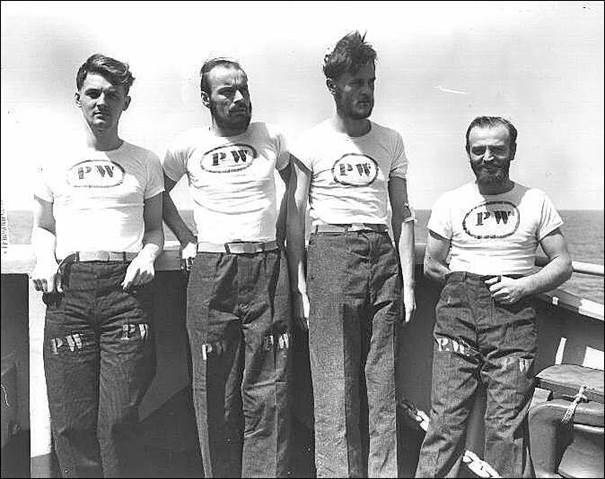
USS Buckley during repairs:
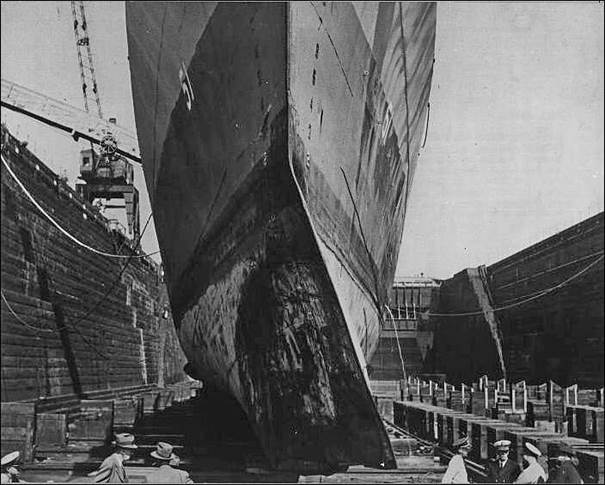
Lieutenant Commander Brent Able, commanding officer of the USS Buckley, receives the Navy Cross from Capt. George L. Menokal at the Boston Navy Yard, where Buckley is undergoing repairs:
